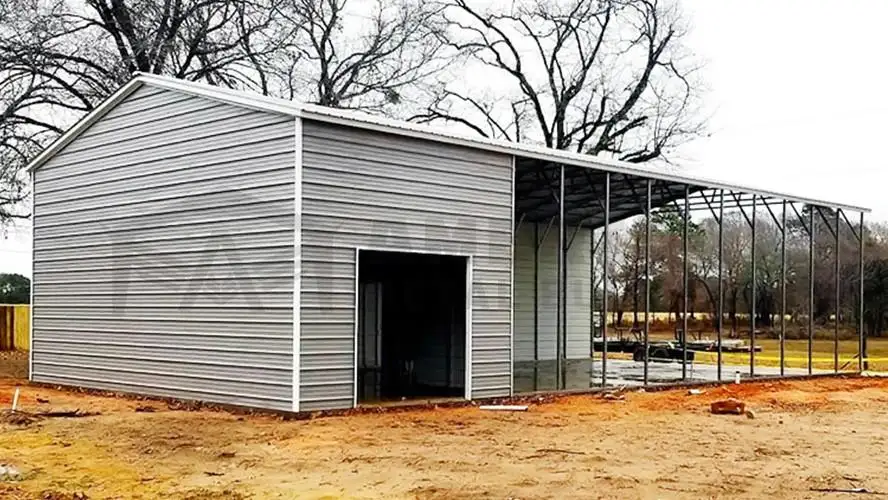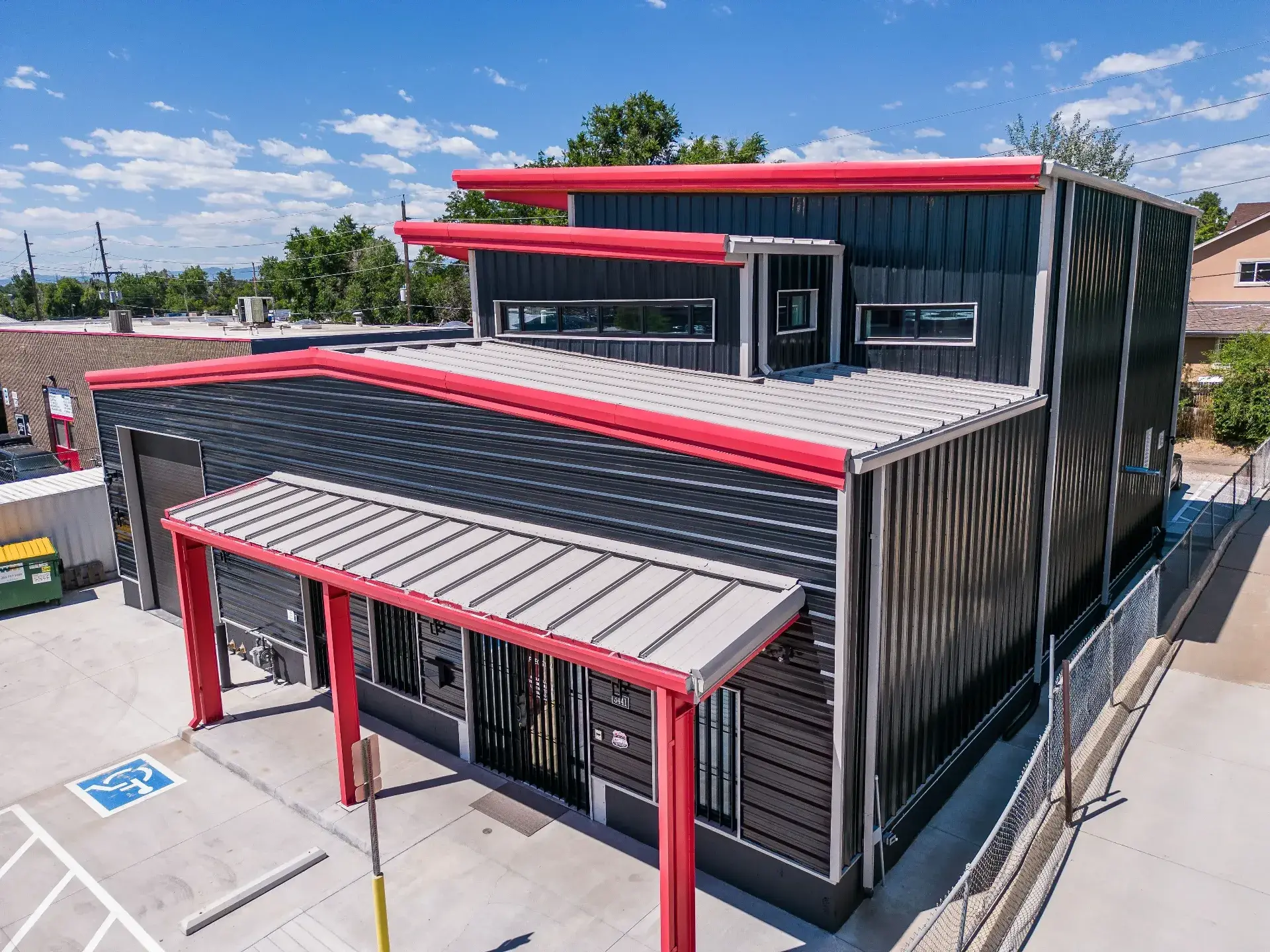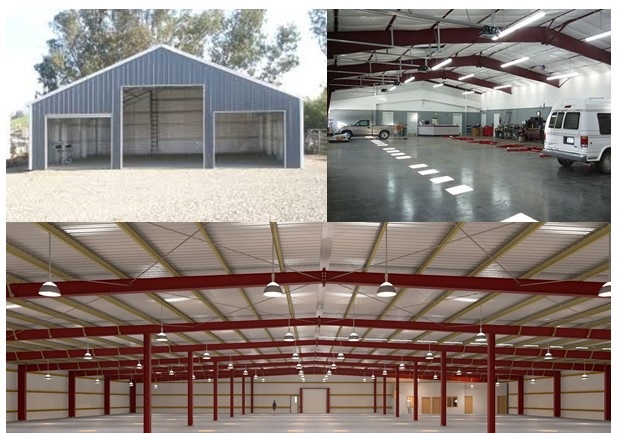Professional Overview to Steel Building Design: Maximizing Effectiveness and Long Life
Steel, with its exceptional strength, longevity, and convenience, has arised as a favored alternative for modern building layout. From enhancing design considerations to applying economical building and construction strategies, the trip in the direction of making the most of efficiency and durability in steel building design is a complex one, supplying a mix of sensible difficulties and creative services that propel the sector ahead. steel buildings.
Advantages of Steel Buildings
Steel buildings provide unequaled resilience and cost-effectiveness contrasted to typical building and construction products. The strength of steel provides excellent architectural stability, making it a preferred choice for structures that need to endure extreme weather or heavy lots. Steel is extremely immune to parasites, mold, and fire, ensuring a longer life-span with minimal upkeep requirements. Furthermore, steel is a lasting material, as it is fully recyclable and can be repurposed at the end of its useful life.
In regards to cost-effectiveness, steel structures are often more budget-friendly than structures made from other materials. The effective building and construction procedure of steel structures can lead to minimized labor prices and much shorter project timelines. Steel's toughness also translates to decrease upkeep expenses in time, as there is much less need for replacements or fixings compared to typical structure products.
Layout Factors To Consider for Effectiveness
Given the advantages of steel buildings in terms of durability and cost-effectiveness, it is vital to focus on layout considerations that make best use of effectiveness and longevity. When designing a steel building for optimum effectiveness, aspects such as the insulation, orientation, and format need to be thoroughly considered.

Moreover, including energy-efficient systems, such as a/c, lighting, and renewable resource resources, can additionally improve the efficiency of steel structures. By integrating these design considerations, steel frameworks can attain ideal efficiency and longevity, giving sustainable and cost-effective remedies for numerous building jobs.
Architectural Honesty and Durability

Regular upkeep, consisting of examinations for indications of wear or damage, is likewise important for identifying and dealing with problems before they compromise the structure's honesty. By prioritizing architectural honesty in the design phase and throughout the structure's lifespan, proprietors can guarantee their steel structures continue to be secure, efficient, and resilient for years to come.
Economical Building And Construction Approaches
Efficient building methods play a crucial function in handling costs without jeopardizing the quality and stability of steel structure jobs. One affordable approach is making use of pre-engineered steel building systems. These systems are designed off-site and afterwards put together on-site, lowering building and construction time and labor expenses. In addition, pre-engineered steel buildings are understood for their resilience and need minimal maintenance, leading to long-term price financial savings.
Another cost-effective strategy is the design-build technique, where the design and building and construction stages are incorporated. This approach fosters collaboration between the design and building groups, improving the procedure and reducing delays and expense overruns (steel buildings). By entailing all this content stakeholders initially, prospective issues can navigate here be determined and settled early, saving both time and cash
Additionally, adopting sustainable building and construction techniques, such as using recycled steel and integrating energy-efficient attributes, can bring about considerable cost financial savings in the future. These techniques not just lower building and construction waste yet likewise reduced operational expenses via enhanced power efficiency. Finally, applying economical construction methods is important for maximizing efficiency and making certain the durability of steel building projects.
Maintenance Tips for Long Life
Appropriate upkeep methods are vital for making certain the longevity and structural integrity of steel buildings. Normal assessments are vital to recognize any signs of deterioration, damage, or use that can endanger the structure's sturdiness. As component of a detailed maintenance plan, it is very important to promptly resolve any kind of issues that arise to stop them from escalating and creating much more considerable damage.

One more crucial upkeep suggestion is to evaluate the building's fasteners, connections, and welds to guarantee they are safe and secure and in excellent condition. Any type of damaged or loosened components must be repaired or changed immediately to keep the architectural honesty of this contact form the building. By implementing a proactive upkeep regimen, steel building owners can make best use of the long life and efficiency of their structures.
Conclusion
In final thought, steel buildings offer many advantages such as performance, long life, and cost-effectiveness. By meticulously considering layout facets, guaranteeing architectural integrity, and making use of cost-effective construction methods, steel structures can be optimized for maximum performance and durability. Normal maintenance is likewise essential to guaranteeing the durability of a steel building. Overall, steel structures are a resilient and reliable choice for different building and construction jobs.
From enhancing design factors to consider to implementing cost-effective building and construction techniques, the trip in the direction of maximizing performance and durability in steel structure design is a multifaceted one, supplying a mix of functional obstacles and imaginative options that push the industry forward.
Provided the advantages of steel structures in terms of longevity and cost-effectiveness, it is crucial to focus on layout considerations that optimize efficiency and durability. When making a steel structure for optimum efficiency, variables such as the insulation, design, and alignment should be meticulously considered. In verdict, carrying out cost-efficient building methods is necessary for making the most of effectiveness and ensuring the longevity of steel building tasks.
By very carefully thinking about layout facets, making certain architectural honesty, and utilizing affordable building and construction approaches, steel structures can be optimized for maximum effectiveness and long life.